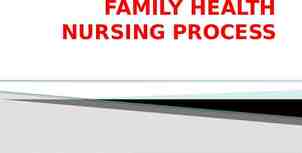Grilling Safety Bureau of Workers’ Compensation PA Training for Health
21 Slides618.92 KB
Grilling Safety Bureau of Workers’ Compensation PA Training for Health & Safety (PATHS) PPT-131-01 1
Grilling Statistics On average, 8,800 home fires are started by grills each year. 86% of households in the US own at least one outdoor BBQ, grill or smoker. 59.3% own a gas grill. Source: NFPA’s Home Fires Involving Cooking Equipment PPT-131-01 2
Grilling Statistics On average, there are over 15,000 patients who go to the ER because of injuries involving grills including over 7,000 thermal burns. Annually grills account for 10 civilian deaths. Approximately 90 million in direct property damage each year. Source: NFPA’s Home Fires Involving Cooking Equipment PPT-131-01 3
Grilling Facts July is the peak month for grill fires followed by May, June and August. According to NFPA, flammable or combustible gas or liquid was the item first ignited in half of home outdoor grill fires. One of every six (16%) home structure fires in which grills were involved in ignition, something that could catch fire was too close to the grill. PPT-131-01 4
Grilling Facts Overall, leaks or breaks were factors in one of every five reported grill fires. Gas grills contribute to a higher number of home fires overall than their charcoal counterparts. Children under five accounted for 1,700 (37%) of the 4,500 thermal non-fire grill burns. These were typically contact burns rather than flame burns. PPT-131-01 5
Grilling Facts Home Grill Fires by Leading Areas of Origin Exterior balcony or open porch – 29% Courtyard, terrace or patio – 27% Unclassified outside area – 14% Kitchen or cooking area – 6% Exterior wall surface – 5% Lawn, field or open area – 1% PPT-131-01 6
Grill Facts Grills manufactured after October 1, 1995, are required to have three additional safety features to eliminate leak hazards: A device to limit the flow of gas in the event of hose rupture; A mechanism to shut-off the grill; and A feature to prevent the flow of gas if the connection between the tank and the grill is not leak proof. Consumers should consider purchasing grills that have these safety features. PPT-131-01 7
Firsthand Account In December 2012, Hannah Storm was badly burned while preparing to cook dinner for her children. After wind blew out the flame, propane gas pooled on her grill and became an explosive fireball when Storm attempted to re-ignite it. Only the instinct to close her eyes upon seeing the flame saved her corneas, but her face, neck, chest and hands suffered first- and second-degree burns. PPT-131-01 8
General Safety Tips Propane and charcoal BBQ grills must only be used outdoors. If used indoors, or in any enclosed spaces, such as tents, they pose both a fire hazard and the risk of exposing occupants to toxic gases and potential asphyxiation. Position the grill well away from siding, deck railings and out from under eaves and overhanging branches. Place the grill a safe distance from lawn games, play areas, and foot traffic. PPT-131-01 9
General Safety Tips Keep children and pets away from the grill area: declare a three-foot "safe zone" around the grill. Put out several long-handled grilling tools to give the chef plenty of clearance from heat and flames when flipping burgers. Periodically remove grease or fat buildup in trays below grill so it cannot be ignited by a hot grill. Extinguish a charcoal grill by closing the lid. Warm charcoal can re-ignite and start a fire while your family is away or sleeping. PPT-131-01 10
Gas Grills Check the gas cylinder hose for leaks before using it for the first time each year. A light soap and water solution applied to the hose will quickly reveal escaping propane by releasing bubbles. If you determine your grill has a gas leak, by smell or the soapy bubble test, and there is no flame, turn off the gas tank and grill. If the leak stops, get the grill serviced by a professional before using it again. If the leak does not stop, call the fire department. PPT-131-01 11
Gas Grills Open your gas grill before lighting. If you smell gas while cooking, immediately get away from the grill and call the fire department. Do not attempt to move the grill. Use only equipment with the label of a recognized testing laboratory. Follow the manufacturers’ instructions on how to set up the grill and maintain it. PPT-131-01 12
Gas Grills Four out of five (82%) grills involved in home fires were fueled by gas while 16% used charcoal or other solid fuel. Gas grills were involved in an average of 7,200 home fires per year, including 3,000 structure fires and 4,200 outdoor fires annually. Leak or break was the leading factor contributing to gas grill fires. PPT-131-01 13
Gas Grill Maintenance Clean your gas grill after each use. This will remove grease that can cause a fire. PPT-131-01 14
Propane Tanks You should use caution when storing your propane tank. Always keep the containers upright. Never store a spare tank under or near the grill or indoors. Never store or use flammable liquids, like gasoline near the grill. To avoid accidents while transporting propane tanks, you should transport it in a secure upright position. PPT-131-01 15
Propane Tanks Be sure your propane tank has an over-fill prevention device. As of April 2002, all tanks sold or refilled are required to have the device to protect against propane leaks that may cause fire or explosions. Never keep a filled tank in a hot car or car trunk. Heat will cause the gas pressure to increase. Which may open the relief valve and allow gas to escape. PPT-131-01 16
Charcoal Grills Purchase the proper starter fluid and store the can out of reach of children, and away from heat sources. Never add charcoal starter fluid when coals or kindling have already been ignited, and never use any flammable or combustible liquid other than charcoal starter fluid to get the fire going. When you are finished grilling, let the coals completely cool before disposing in a metal container. PPT-131-01 17
Charcoal grills Charcoal or other solid-fueled grills were involved in 1,400 home fires, including 600 structure fires and 700 outside fires. The leading cause of these structure fires was something that could burn being too close to the grill. PPT-131-01 18
Resources NFPA – National Fire Protection Agency www.nfpa.org Hearth, Patio, and Barbecue Association www.hpba.org The Consumer Protection Agency www.cpsc.gov PPT-131-01 19
Contact Information Health & Safety Training Specialists 1171 South Cameron Street, Room 324 Harrisburg, PA 17104-2501 (717) 772-1635 [email protected] Like us on Facebook! https://www.facebook.com/BWCPATHS PPT-131-01 20
Questions PPT-131-01 21


























